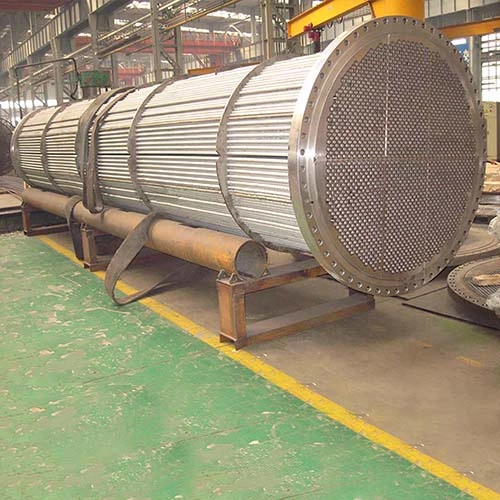Particulate Fouling
Solid particles such as sands, dust, insoluble salts, gelatinous substances, greasy dirt contained in fluids will easily clog the heat exchanger. Moreover, when the fluids pass through the surface of the heat exchanger, sediments produced by them may cause under-deposit corrosion and provide a living space and breeding ground for certain bacteria. Also, improper corrosion prevention will eventually lead to corrosion perforation of surface and heat exchanger leakage.
Biofouling
Apart from cooling devices for sea-water, biofouling in circulating water system generally refers to microorganism fouling, which mainly includes iron bacterium, fungi, and algae. Iron bacterium can convert the soluble ferrous iron into insoluble precipitate of ferric iron and cause concentration cell corrosion. Besides, concentration cell produced by algae in circulating water system will result in under-deposit corrosion, some bulk precipitates can even clog the pipeline in the heat exchanger, reducing the flow rate of fluid, thereby decrease the heat exchanging efficiency.
Crystal Fouling
In circulating water system, with the evaporation of water, the density of salts that are soluble in water will increase. Some salts will supersaturate and separate out while some other salts will de-compound and produce precipitation when pass through the heat-transfer surface of the heat exchanger. This kind of compact scale that consists of inorganic salt is known as crystal fouling.
Corrosion Fouling
Corrosive fluids or impurity in fluids will corrode the heat-transfer surface of heat exchangers and produce precipitation. The degree of corrosion depends on factors such as components in fluids, temperature, pH of processed fluids. Materials of cooling pipes, which are normally copper pipes and brass tubes, will react with oxygen at temperature of 40 - 50℃ and produce corrosion products of copper or copper alloy, Ca-Mg sediments.
Freezing Fouling
Freezing fouling is caused by fluids which are solidified (such as liquid water turning into ice) when passing through the heat-transfer surface. It depends on whether the temperature is uniform or not.
Metallic Corrosion
Metallic corrosion of heat exchangers mainly refers to plate corrosion, which is closely related to impure water, water polluted by air, the inner surface conditions of pipes, as well as the flow rate of fluids, etc.
Chemical Corrosion - Oxidation-reduction reactions that happen between metal and substance in contact with it.
Galvanic Corrosion (the most common corrosion) - It is an electrochemical process where the surface of metal corrodes when it is in contact with electrolyte solution, usually in the form of localized corrosion such as stress corrosion cracking, pitting corrosion, crevice corrosion.
Stress Corrosion
Only in specific corrosive environment and with tensile stress that is large enough can stress corrosion produce. Chloride ions, which have tiny radius, strong penetrating power, are one of the main reasons that cause stress corrosion - they can easily penetrate protective coating with extremely small pores, damage part of passive films, enter into the crack tip and generate HCl. Moreover, autocatalytic effect will also be caused during this process, meanwhile, hydrogen ions will separate out on the tip and infiltrate the front edge of crack, embrittling the metal. Another important factor that causes stress corrosion is temperature. The higher the temperature is, the lower the density of chloride ions is, and the more easily stress corrosion will be caused.
Biological Corrosion
Biological corrosion frequently happens when the metal surface is in contact with media like circulating water in water-cooling system because biont will eat corrosion inhibitors and metabolize acid, damaging the corrosion-resistant coating of metal. Besides, biont's metabolism will also consume oxygen and lead to uneven oxygen density on the metal surface.


 English
English Español
Español русский
русский